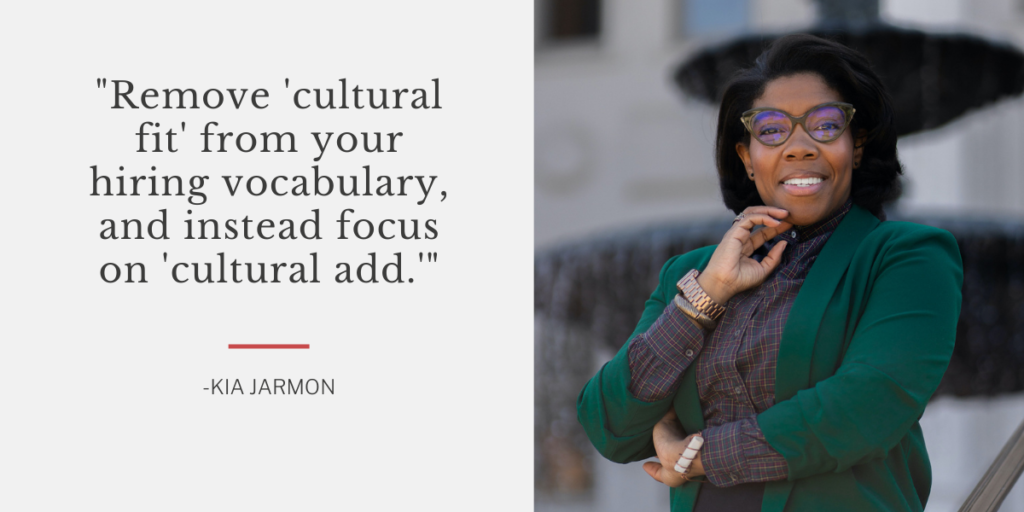This month for our KG Connects webinar series, we dove headfirst into the power that communication holds in helping businesses become more diverse and inclusive with Kia Jarmon.
Kia is an entrepreneurial solutionist who intersects communication, culture, crisis, and community, most specifically through her leadership with MEPR Agency – a boutique communications and community engagement agency founded in 2006.
Defining diversity, inclusion and accessibility
To begin, Kia defined concepts that are essential to driving change.
While diversity is about differences, inclusion is about experience. Inclusion involves fostering an environment that is safe and welcoming regardless of experience.
When moving from diversity to inclusion, what’s often missing is equity. Before establishing true inclusivity, historic wrongs need to be made right. Policies and processes of change must be underway in order for a community to advance.
How do companies start diversity initiatives?
When working to achieve diversity and inclusivity, there must be commitment from leadership in order to enact change. Then, companies must look externally to an expert that can help point out blind spots, and operationalize and implement practices.
It’s important to recognize visible things that are missing from an organization – whether the answers are a who or a what. For example, when employees had to work virtually because of COVID-19, many companies didn’t assess the access employees had to the right technology and connectivity.
What’s more, knowing that conversations around diversity and inclusion will be difficult, it’s helpful to start small. Consider this moment as a time to adapt, and truly listen.

Establishing goals
As communicators and marketers, setting goals is second nature. For diversity and inclusion efforts, businesses should look at goals in two ways: visually and anecdotally, which might not be measurable. Trust is a metric that’s hard to quantify, but absolutely important to the process.
- Start with a conversation – Discuss the internal and external climate with employees. Whether this is as a one-on-one or in a large group, as formal training or a book club, current events constantly affect the work environment.
- Ensure goals are embedded into strategic plan – Goals that involve diversity and inclusion should be embedded within the company’s growth plans. If it’s not written down and assigned, it won’t be managed, measured and achieved.
- Be explicit – Lay out how you want your teams to look, and ensure that they are reflective of the communities you serve. Remove “cultural fit” from your hiring vocabulary, and instead focus on “cultural add.” Often, it’s not an issue about finding diverse talent, but keeping them.
- Work together to re-evaluate company values – Discuss as a whole how the business moves from conversation to putting efforts into practice. Ensure you’re held accountable. The processes often takes a long time, as you’re reevaluating company values.
Developing external communications
Lastly, Kia pointed out what’s lacking in inclusive external communications. Media needs better visuals that accurately capture our society. Share images of what might not be considered “traditional,” such as a nonbinary person or someone with a prosthetic, and ensure you’re using actual voices. Most importantly, these efforts must be authentic and true.
When looking to understand other communities, Google is your best friend, as it can provide information into classes and resources that may even be provided locally. Nielsen and Pew can also serve as great data sources.

Catch this webinar and the next!
To learn more about Kia’s perspective, be sure to catch the webinar on demand!
Next up: A peek inside the New York Fashion Tech Lab
Technology and innovation is critical to the fashion industry. In October, we’ll host Jackie Trebilcock for a look inside the New York Fashion Tech Lab and how it empowers women-led tech companies. We hope you’ll join us! You can register here.

